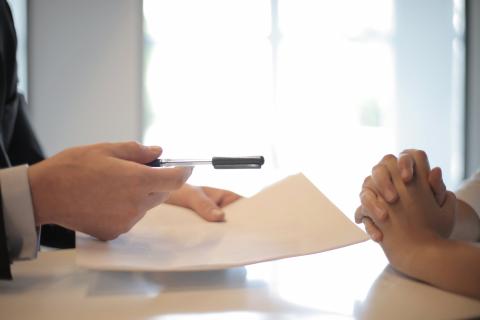Recycling Opens The Door for Precious Extraction Of Heavy Metals From Lithium-Ion Batteries
Sep 18,2016
Lithium ion batteries (LIBs) have been widely used as an electrochemical power source in electronic equipment due to their high capacity, good cycle performance and high energy density (Zeng.and Li, 2014). The tremendous consumption of LIBs has generated a large amount of spent LIBs, resulting in resource waste and environmental pollution (Li et al., 2014; Xin et al., 2016). LiCoO2 is one of the most important cathode materials for LIBs (Scrosati and Garche, 2010). Recovering valuable metals from LiCoO2 have received much attention for many years. To recover metal values, the spent LIBs were mainly treated by the processes of pre-treatment, leaching and metal separation. The pre-treatment consists of discharging, dismantling, crushing, heating, etc (Xu et al., 2008; Niu et al., 2014; Zhang et al., 2014; Hanisch et al., 2015a; Hanisch et al., 2015b). Most plastics, electrolyte, Al and Cu foils contained in spent LIBs could be removed and exhausted cathode materials could be further enriched with calcination at 700 oC for 5 h (Li et al., 2010). And then the exhausted cathode materials were leached by acid (HCl, HNO3, H2SO4, etc.) with the help of oxidizing agents (H2O2, NaHSO3) (Nayaka et al., 2015; Barbieri et al., 2014a; Lee et al., 2003; Wang et al., 2009; Paulino et al., 2008; Chen et al., 2015a). Finally, the valuable metals were recovered by solvent extraction, ion exchange or precipitation method (Zhu et al., 2012; Kang et al., 2010). Jha et al investigated the leaching of Co from spent LiCoO2. The results show that 70.0% cobalt can be leached with 5% H2O2 and 2 M sulfuric acid (Jha et al., 2013). Barbieri et al leached the exhausted LiCoO2 with HNO3 and prepared Co(OH)2 and Co3O4 films from the leach liquor (Barbieri et al., 2014b). Zeng et al recycled cobalt and lithium from spent LIBs with oxalic acid, 98% lithium and 97% cobalt were recovered as CoC2O4 and Li2C2O4 or LiHC2O4, respectively (Zeng et al., 2015). Nowadays, the plug-in hybrid electric vehicle (PHEV) and electric vehicle (EV) have attracted extensive attention due to the increasingly serious smog and greenhouse gas emission (Mats et al., 2010). However, LiCoO2 could not meet HEV and PHEV demands, the current prices are too high for a broader use in electric mobility, so material manufacturers are working on the reduction and finally on the substitution of cobalt and nickel in battery active materials (Hanisch et al., 2015b). The compositions of alternative materials are different from LiCoO2 and the recycling methods for LiCoO2 could not be directly applied in recovering metal values from the alternative materials (e.g. LiNixCoyMn1-x-yO2). Meanwhile, the mixture of two or more materials (LiMn2O4, LiCoO2, LiNixCoyMn1-x-yO2, LiNiO2 and Li2Mn2O4, etc.) is used as cathode material (Chen et al., 2015b), which can reduce the cobalt dosage and cost and also enjoys advantages in safety. However, recovering valuable metals from the mixed system of spent LIBs is more difficult. Attentions have been taken for recovering valuable metals from LiNixCoyMn1-x-yO2 and the mixed system of spent LIBs. The pre-treatment and leaching process of recovering valuable metals from LiNixCoyMn1-x-yO2 and the mixed system of spent LIBs are similar to the processes of recycling of LiCoO2 cathode materials (Chen et al., 2011). The leach liquor of LiNixCoyMn1-x-yO2 cathode material or the mixed cathode materials contains not only lithium and cobalt, but also nickel, manganese or aluminum (Joulié et al., 2014; Pagnanelli et al., 2014; Li et al., 2009). Due to the similar physical and chemical properties of the transition metals (i.e. nickel, cobalt and manganese), the metal separation from the leach liquor of LiNixCoyMn1-x-yO2 cathode material or the mixed cathode materials is more complicated than that of LiCoO2 (Kitao et al., 2005). To recover metals (such as nickel, cobalt, manganese, etc.) from their mixed leaching liquor, a complicated process involving selective precipitation or solvent extraction is always necessary (Provazi et al., 2011; Joo et al., 2015). Chen et al (Chen et al., 2015c) investigated the recovery of lithium, nickel, cobalt and manganese from sulfuric acid leaching liquor of spent LIBs. Nickel was selectively precipitated by dimethylglyoxime reagent. Manganese was selectively extracted from the leaching liquor using cobalt loaded D2EHPA. Finally, cobalt and were precipitated using ammonium oxalate solution. Meanwhile, the shortage of lithium resource has become a key problem restricting the development of the high-power LIBs. The demands for high-power LIBs are rapidly increasing with the development of PHEV and EV. A larger number of spent high-power LIBs will be generated and the content of lithium contained in theses spent cathode material (around 7.0 wt%) is higher than the lithium grades of some salt lake brines (0.017-0.15 wt%) (Grosjean et al., 2012). Recovering lithium from spent high-power LIBs has attracted attentions. However nowadays, recycling processes focus on the recycling of cobalt and nickel, not lithium (Hanisch et al., 2015a). The lack of relations between the recovery of lithium and other metals (Ni, Co and Mn) with complex process results in low value-added products (e.g. NiSO4 or CoC2O4, Li3PO4, etc) (Chen et al., 2016). Therefore, developing a better overall utilization technology with all metal (Li, Ni, Co and Mn) recovering for spent lithium ion batteries enjoys great significance for sustainable development, productivity enhancement and economic benefit improvement of recycling spent LIBs. Due to its ecological and economical efficiency, chelation technology for extraction of heavy metals from wastes with extractants, e.g. D2EHPA (di(2-ethylhexyl) phosphoric acid), Cyanex 272 (bis(2,4,4-trimethylpentyl) phosphinic acid), EDTA (ethylene diamine tetraacetic acid), etc.), has been considered as one of the most promising green methods (Garima et al., 2015). In this study, an efficient process based on combination of recovering lithium and regenerating cathode materials from spent LIBs is developed. It can not only relieve shortage of lithium resources, but also can obtain high value-added cathode materials and improve economic efficiency of recycling. Firstly, the separation of transition metal elements (nickel, cobalt and manganese) and lithium was carried out by solvent extraction with D2EHPA. Through controlling the parameters (mixing time, pH, extractant concentration, etc.) affecting the extraction efficiency of metals, the nickel, cobalt and manganese were simultaneously extracted with D2EHPA in kerosene and about 70.0 % lithium was left in leaching solution. And then, the nickel, cobalt and manganese extracted in the organic phase were directly regenerated as Ni1/3Co1/3Mn1/3(OH)2 without separating each metal individually and the lithium left in leaching solution was precipitated by sodium carbonate solution as Li2CO3. Finally, the cathode materials LiNi1/3Co1/3Mn1/3O2 were regenerated with obtained Ni1/3Co1/3Mn1/3(OH)2 and Li2CO3. The elemental analysis shows that main elements and impurities contained in regenerated cathode materials can meet the production standard of Syria. The electrochemical tests indicate that the regenerated cathode material has good cycle performance. Therefore, the proposed recovery process is simple and efficient. It has potential applications in regenerating high value-added composite cathode materials from spent LiNixCoyMn1-x-yO2 cathode material or the mixed cathode materials in industry scale production.






